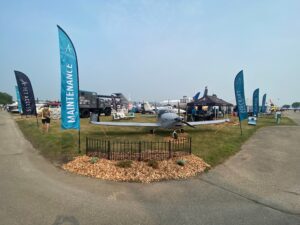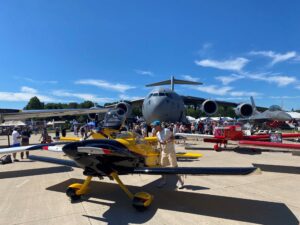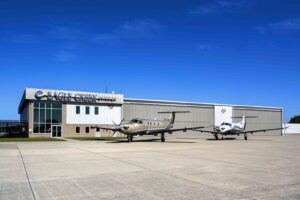*Please note that nothing presented here is intended to override what is written in the OEM and/or FAA publications that affect your aircraft and its operations. My comments here are my own comments and may or may not reflect the opinions of my employer, an OEM, or of any other governing agency.
As a full-service maintenance facility, we often work with our customers to address Airworthiness Directives issued by the FAA. I’d like to explain why certain ADs are issued and what may be required to be in compliance. I serve as Eagle Creek Aviation’s Technical Advisor and Twin Commander Training Manager.
The first AD I’d like to go over is AD 2018-22-01: Honeywell International Inc. Turboprop Engines.
The FAA posted AD 2018-22-01 affecting TPE331 -8, 10, -10N, -10R, -10U, -10UA, -10UF, -10UG, -10UGR, -10UR and -11 turboprop engines with second stage turbine rotor assemblies, part numbers 3102106-1, -6, and -8 and 3101514-1, 10 and -12 installed.
In the summary statement, the FAA states “We are superseding Airworthiness Directive (AD) 88-12-10 for certain Honeywell International Inc. (Honeywell) TPE331 turboprop engines. AD 88-12-10 required reducing the life limit for certain second stage turbine rotors. This AD requires removing certain second stage turbine rotors from service at a reduced life limit. This AD was prompted by report that a TPE331-11U engine experienced an uncontained rotor separation. In addition, cracks were discovered through eddy current inspection (ECI) in the bore of the second stage turbine rotor assembly after publication of AD 88-12-10. We are issuing this AD to address the unsafe condition on these products.”
This AD was prompted by a report that a TPE331-11U engine installed in an M7 Aerospace LP SA227 airplane experienced an uncontained rotor separation and the discovery of cracks in the bore of the second stage turbine rotor assemblies after publication of AD 88-12-10. They issued this AD to prevent failure of the second stage turbine rotor. The unsafe condition, if not addressed, could result in uncontained release of the second stage turbine rotor, damage to the engine, and damage to the airplane.
I have seen a sample of the potential destruction offered by such an event. Back in the mid-1980s, there was an event where the turbine section of another aircraft decided to part ways with the rest of its engine, bounce over another aircraft, landed at the left main gear of a Commander, ate the tire, clawed its way up the side of the fuselage and launched itself about 1,500 feet across the airport, to be found in the midst a burning circle of grass. The “clawed up” Commander went to the factory to have the damaged skin replaced. That is when I first observed the effects of a sudden tremendous amount of energy turned loose on an airport.
In the body of the AD the FAA posted a couple of second stage turbine disc replacement tables based on certain number of cycles or next access. Next access being defined in the AD as an event where the second stage turbine is removed from the engine (the reason why doesn’t matter). Ultimately (with one outlier), the -8 and -10 engines tables call for removal of these part number discs prior to reaching 3,000 cycles since new after the effective date of the AD.
So, this makes me wonder, do you count cycles? Generally, in the TPE331 world cycles are counted as:
- Engine start
- Taxi out
- Flight
- Landing
- Taxi in and shutdown
So, for every flight, you count one cycle. Ground runs do not count. That’s actually pretty generous when you think about it. But then if you don’t keep track of your flights – here it comes – you take the total hours since engine was new and multiply that time 4! Plenty of reason to make sure you keep track of aircraft flights/cycles.





